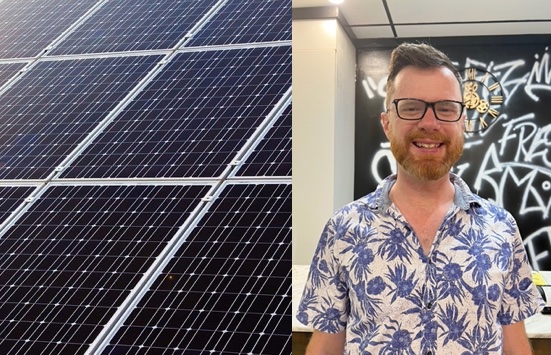
With RCC support, a University of Queensland data scientist has won first prize in an international renewable energy competition.
Announced on Tuesday, 7 December, Dr Richard Bean, a Research Fellow in UQ’s Centre for Energy Data Innovation (CEDI), won the forecasting prize ($US 2,000) and came second in the optimisation category ($US 5,000) of the 2021 Institute of Electrical and Electronics Engineers Computational Intelligence Society (IEEE-CIS) technical challenge on predicting and optimising for renewable energy scheduling.
Focusing on Monash University’s microgrid, the goal of the competition was to develop both an optimal battery schedule and lecture schedule based on predictions of future values of energy demand and production.
With six buildings and six solar installations, competitors had to forecast energy use for the months of October and November 2020, and schedule classes to minimise energy cost whilst factoring in constraints around when classes could occur.
For his forecasting, Richard used R software on his laptop as each execution only took about 30 minutes. However, his optimisation work using Gurobi, mathematical optimisation solver software, required heavy duty computing power, so he learned how to use UQ high-performance computer Tinaroo.
“[RCC HPC Manager] Dr David Green spent a lot of time with me on Zoom working out the idiosyncrasies of Gurobi and how to get it to work on Tinaroo,” said Richard.
“Without David, I would either have had to pay for Gurobi Cloud services myself, run the optimisation on my laptop (as I did for phase one), or learn by experimentation on Tinaroo. I would not have been able to evaluate the different approaches I tried as effectively.
“Having David’s support, I was able to interpret error messages and get up and running with Gurobi on Tinaroo in terms of working out how to set up the batch input files, finding the limits of the job submission system, working out the options of the system and Gurobi, and getting the jobs to run as efficiently as possible. He also installed the latest version of Gurobi for me quickly.
“The benefits of using Tinaroo were that I could assign each of the 10 instances to a different machine with quite a lot of RAM — I noticed some were using up to 50 GB of RAM, whereas my laptop had only 32 GB of RAM total. Also, my laptop is of course being used for work purposes, it’s not a dedicated machine — it gets noisy and hot and slows down my other work if I use it for Gurobi as well as R.”
During the IEEE-CIS technical challenge — which built upon Richard’s electricity and solar work with CEDI — he discovered how much optimisation software had improved and will revisit some of his past research problems by using Tinaroo.
Richard has more than 40 publications in areas including combinatorics, statistics, power systems and transport.
He has written a report about his methodology for the IEEE-CIS technical challenge.



